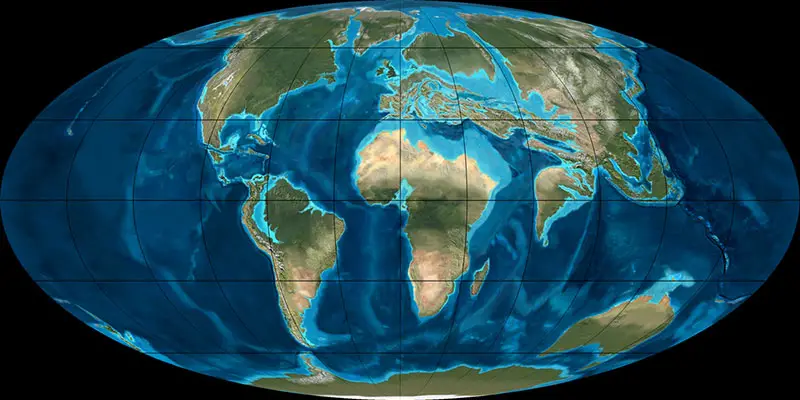†Afradapis
Afradapis ist eine Primatengattung, deren 2 Mitglieder ab dem frühen Paläogen (Eozän) im Priabonium lebten, das vor ungefähr 38 Millionen Jahren begann und bis vor 33,9 Millionen Jahren andauerte. Viele Überreste wurden in Ägypten gefunden.
Afradapis ist der Gattungname einer ausgestorbenen Primatenart aus dem Eozän, die man zur Unterfamilie Caenopithecinae innerhalb der Teilordnung Adapiformes zählt und die 2009 von einer internationalen Forschergruppe wissenschaftlich beschrieben wurde.
Die Überreste des einzigen Vertreters Afradapis longicristatus stammen aus der Fayyum-Becken, Birket Qarun Formation (Ägypten).
Afradapis longicristatus
Das Typusexemplar mit der Bezeichnung CGM 83690 ist ein teilweise erhaltener Unterkiefer mit Prämolaren und Molaren (P4-M3). Basierend auf dessen Morphologie kann auf die Lebensweise schließen: Afradapis longicristatus war ein baumlebender Allesfresser.
| Sammlung | Kommentar zum Fundort | Epoche, Alter | Geologie, Formation | Kommentar zur Sammlung |
|---|---|---|---|---|
| Birket Qarun 2 | Birket Qarun | BK-2; BQ-2; BQ 2; Birket Qarun Locality 2 | ||
| Kommentar z. Stratigraphie | Lithographie | Kommentar z. Taxonomie | ||
| "183 m below the contact of the Qasr el Sagha and Jebel Qatrani formations... This horizon was recently placed in the lowermost (Umm Rigl) Member of the Qasr el Sagha Formation, but renewed work indicates that these fossiliferous alluvial sediments are lithologically distinctive and best retained in the Birket Qarun Formation"; according to Seiffert et al. 2005 the fossilferous beds are "229 m below Quarry L-41," "about 5 to 15 cm thick," and based on new paleomagnetic data within C17n.1n and "earliest Priabonian" | "bioclastic ironstone conglomerate" (Seiffert et al. 2003) or "ironstone-rich fining upward sequences of medium-to-fine grained sands and muds" | additional taxa that are not primates and therefore not worth describing include "proboscideans, hyracoids, herodotiines, ptolemaiids, creodonts, anomaluroid and hystricognathous rodents, chiropterans, and insectivores" (Seiffert et al. 2005) |
| Physiologie | |
|---|---|
| Gewicht: | ? |
| Schwestertaxa | |
|
|
|
